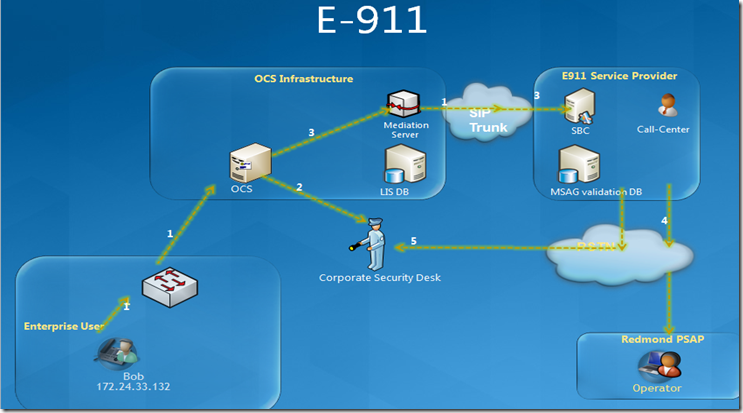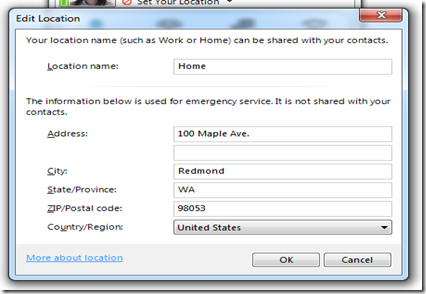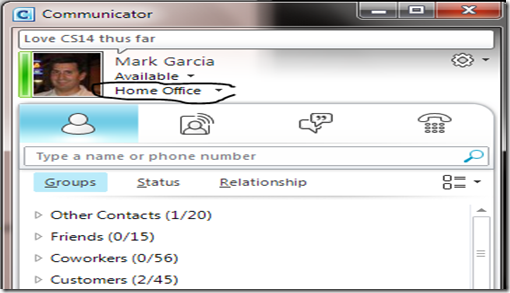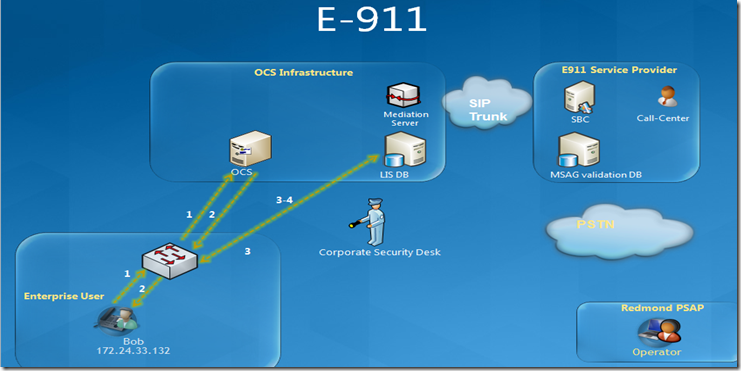How does E-911 work with the upcoming Communications Server 14?
With all the openness (watch the video showing the new CS14 clients and new Silverlight conferencing client) the product team is revealing at TechEd 2010 this week around CS14, I figured I could now blog about a common question I get from customers.
This was a question from a university in the Chicago area (most diagrams courtesy of the CS product team). Note: this information is based on beta technologies and may change:
What does E-911 need to provide as a base requirement?
E911 needs to provide location with emergency calls (North American)
The dispatchers must know the civic/street address of the caller
Locations may need to be to specific building, floor, wing, office, etc.
What E-911 challenge does CS14 need to address?
CS14 needs to support the roaming nature of Communicator users
Inside the network (automatic or manual)
Outside the network (manual then automatic for frequent locations)
Sample of entering a manual location:
Sample of automatic frequent location outside the network. I type it in once and it always remembers that location based on subnet:
What standards is the CS14 E-911 architecture based on?
It is based on the National Emergency Number Association (NENA) i2 Enhanced 911 services architecture. More here.
What are some new features of E-911 with CS14?
Connecting to the appropriate authorities without having a PSTN gateway to each emergency network
Added enablement location to provide flexible deployment
“Network Sites” – can add in subnets or network ports tied to location
Users – can be associated with a floor, cube, address
Added a Location Information Server
Contains records of civic addresses associated with network identifiers
Renders locations to UC clients
Locations can be used independent of E911
Diagram of the location registration process:
Client registration
1-Provisioning
a) Populate LIS with network element and location records
b) SIP trunk connected to SP
c) Enable sites or users
2- Addresses are sent for validation
3-Report back valid/invalid addresses
Diagram of the client location process:
Client location
1- Client sends subnet information to registrar
2- Registrar returns LIS URI (and E911 Enablement data) during Registration. This is because Subnet 172.24.33.132 is enabled for E911
3- Client sends subnet to LIS – locations by subnet.
4- LIS does subnet/location match and returns the location in PIDF-LO format
Diagram of the end user dialing 911:
When 911 is dialed:
1-Client dials 911 – includes PIDF-LO in SIP INVITE
2-IM notification of emergency call, party, and location sent to security group (optional)
3-E911 call routed over SIP trunk
4-Routing Provider connects to appropriate PSAP
5-Voice path connected to security group (optional)
What partners are we working with for E911 call routing services?
Currently, we have announced two partners at VoiceCon:
Where can I get a better deep dive on the upcoming CS14 voice capabilities?



